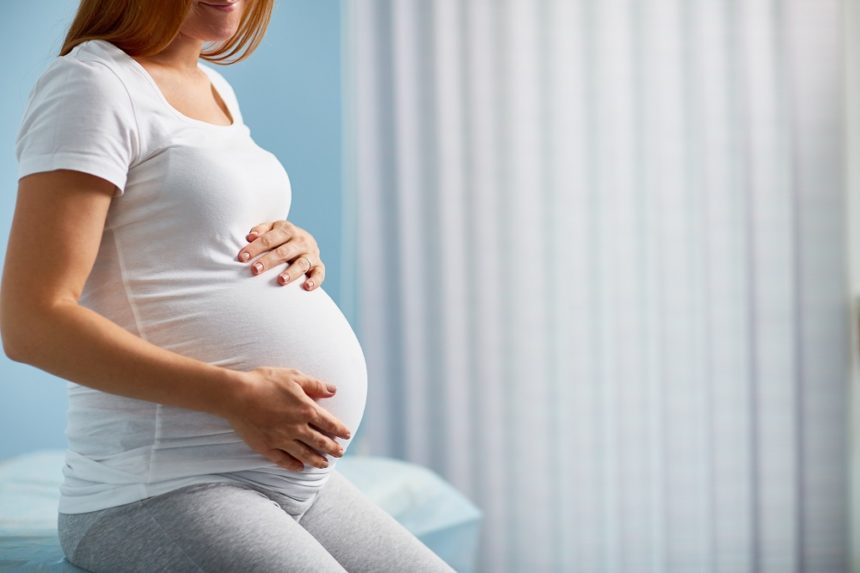To understand unicornuate uterus, a congenital abnormality of the uterus, it’s helpful to understand how the uterus is formed. During typical fetal development, two tubelike structures, called the Mullerian ducts, fuse together to create the uterus. The upper portions form the fallopian tubes. If one of the ducts fails to develop, it may result in a single-horned uterus, called a unicornuate uterus. Usually this disorder isn’t detected until later in life.
In This Article:
- What is Unicornuate Uterus?
- What Causes Unicornuate Uterus?
- Symptoms of Having Unicornuate Uterus
- How is the Diagnosis Done?
- Unicornuate Uterus and Pregnancy
- Does Unicornuate Uterus Have any Impact on Fertility?
- Possible Treatment
All You Need to Know about Unicornuate Uterus and Pregnancy
What is Unicornuate Uterus?
A unicornuate uterus is a rare congenital uterine abnormality (mullerian duct abnormality). It is a complication in which the uterus does not develop completely and has only one fallopian tube instead of the normal two. It looks like a single rudimentary horn. The uterus is also smaller than a normal uterus. It may be disconnected from other parts of the womb and is hence unable to drain out menstrual fluid. It may also be connected with the rest of the uterus or may contain a functional endometrium. In certain cases, the uterus may develop a smaller offshoot called a hemi-uterus.
What Causes Unicornuate Uterus?
It is caused due to an abnormal mullerian duct pr paired duct of the embryo. The women are born with this so it is a congenital abnormality. About 2 to 8 percent of women with infertility are diagnosed with this.
Symptoms of Having Unicornuate Uterus
This is an asymptomatic condition when there is a hemi-uterus with a small cavity and a functional endometrium. It is asymptomatic condition because the cavity forms a connection with the uterus and the vagina and frains out the menstrual fluid. So, there is no abdominal pain, discomfort or pelvic pain. This occurs in 65% of women and the condition is totally undetected till the woman faces difficulty in conceiving. In such cases, the treatment becomes delayed.
But in many cases the horn does not connect to the uterine cavity which results in following symptoms –
- Chronic pelvic or period time abdominal pain – this can occur in cases where the functioning horn is solid and isolated from the rest of the uterus. The pain occurs because of a build-up of menstrual fluid that cannot drain out through the vagina.
- Hematometra – this is the accumulation or retention of blood in the uterus because of its inability to drain out fluids. The symptoms are cramping pain during periods in the lower abdomen and pelvic midline, frequent urination and urinary retention. Women in pre-menopause may also report abnormal bleeding or no menstruation at normal cycles. The bluid-up of blood may also cause low blood pressure or a vasovagal issue. However, women in menopause may be asymptomatic.
- Endometriosis – this is a disorder in which the tissue that normally lines the interior of the uterus (called the endometrium) is found to grow outside the uterus. It involves a lot of severe, sharp, nagging pain in the lower abdomen that does not go away with medication. Often surgery is required as treatment.
- A history of infertility.
- Premature birth, miscarriage and breech baby.
How is the Diagnosis Done?
This condition remains undiagnosed until a woman suffers from pregnancy complications like a history of infertility, repeated miscarriages or premature delivery.
There are some tests that detect this condition and facilitate timely treatment –
- Infertility and regular pelvic test – detection is usually rare in these tests.
- Imaging – a normal ultrasound often fails to diagnose this condition. An MRI, which is a three dimensional sonography has better results.
- Laparoscopy – this test can confirm.
- Hysteroscopy – this is a process in which a miniature telescope is inserted via the cervix to view the uterus for diagnosis or treatment of certain conditions. This can also detect unicornuate uterus.
Unicornuate Uterus and Pregnancy
Women with a unicornuate uterus have reproductive complications. Pregnancy is difficult because usually only one fallopian tube functions. These are following risks involved if there is unicornuate uterus pregnancy –
- Miscarriage – there maybe foetal demise and stillbirth because of the abnormal shape of the uterus and inadequate blood flow to the uterus and placenta that feeds the foetus.
- Premature birth – women with unicornuate uterus may go into early labour because the baby outgrows the uterine space that is smaller than usual. This happens in the first stages of pregnancy. It increases the chances of a breech birth as well, where the baby is born ‘bottom first’ instead of the normal ‘head first’. This can lead to a cesarean instead of a normal delivery.
- Ectopic pregnancy – women with unicornuate uterus may have an ectopic pregnancy. This occurs when a fertilized egg implants outside the uterus, typically in the fallopian tube. Unfortunately, the pregnancy must be terminated.
- Heavy bleeding – this could pose a life threat because of premature rupture of membranes during the first or second trimester.
- Intrauterine growth retardation – the newborn may be smaller in weight and size.
- Placenta previa – when conceiving, the placenta normally attaches to the upper part of the uterus, leaving the cervix free. In placenta previa, it attaches to the lower part of the uterus, spreading to the entire or part of the cervix.
- Placental abruption – the placenta gets suddenly detached from the uterus, usually after the 20th week of pregnancy. If this is severe and undetected it may result in stillbirth or premature baby.
- Intrauterine foetal demise – a stillborn baby
- Abdominal pain and collapse – even if women with unicornuate uterus undergo highly advanced procedure, detection may be delayed. By then it may be too late and result in collapse.
Womens with unicornuate uterus with rudimentary horn have an increased incidence of gynecologic problems and tend to present at menarche or later in life, symptoms like dysmenorrhea and chronic pelvic pain are seen.
Does Unicornuate Uterus Have any Impact on Fertility?
Unicournuate uterus causes significant gynaecological and obstetrical complications. This has a major impact on fertility. Women are rarely able to conceive when there is a rudimentary horn. Even if a woman manage to conceive, there are various risks involved like uterine rupture during the first or second trimester that triggers heavy bleeding and could pose a life threat to the mother as well as the foetus that may be terminated. Unicornuate uterus impacts fertility of women at the rate as follows –
- Live birth: 29.2%
- Prematurity: 44%
- Ectopic pregnancy: 4%
- First trimester abortion: 24.3%
- Second trimester abortion: 9.7%
- Intrauterine fetal demise: 10.5%
Possible Treatment
The treatment is never fully effective because the uterus cannot be enlarged surgically. The surgical and non-surgical procedures are the most accepted methods to simply manage the condition are –
- Cervical stitch or cerclage – this is often suggested in unicorrnuate uterus cases that report a history of miscarriages, premature delivery and incompetent cervix. In this, the cerix is stitched and closed during pregnancy.
- Laparoscopic surgery – this is conducted to remove an isolated hemi-uterus because it causes abdominal pain due to the accumulation of menstrual blood that cannot flow out.
- Emergency delivery under special care – pregnancy in a non-communicating uterus is possible. However, this poses greater risks to pregnant women and could involve an emergency situation because the uterus may rupture by the end of the second trimester due to space constriction in a smaller uterus. Utmost care and caution should be taken to avoid risks to the mother and the baby. This happens in an estimated 89% of cases. To avoid this, doctors recommend a laparoscopy to remove the isolated hemi-uterus.
Usually, though, no surgical intervention is recommended unless endometrial tissue in the rudimentary horn causes pain or a pelvic mass. A solid non-functioning hemi-uterus also need not be removed surgically.
Finally, the type of treatment in unicornuate uterus depends a lot on the variations. The condition of the uterus varies from case to case. For example –
- A rudimentary horn may or may not be present
- The horn may or may not connect to the rest of the uterus
- The size of the uterus can also vary
Assisted reproduction – this is one of the most accepted treatments is unicornuate uterus IVF with embryo transfer.
Conclusion
Unicornuate uterus is very complex but many women have given birth to full-term healthy babies and even twins. Complications can be managed and averted with careful and advanced medical care.
Sources:













